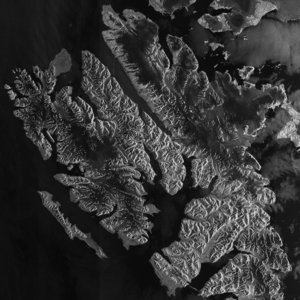Accept all cookies Accept only essential cookies See our Cookie Notice

About ESA
The European Space Agency (ESA) is Europe’s gateway to space. Its mission is to shape the development of Europe’s space capability and ensure that investment in space continues to deliver benefits to the citizens of Europe and the world.
Highlights
ESA - United space in Europe
This is ESA ESA facts Member States & Cooperating States Funding Director General Top management For Member State Delegations European vision European Space Policy ESA & EU Space Councils Responsibility & Sustainability Annual Report Calendar of meetings Corporate newsEstablishments & sites
ESA Headquarters ESA ESTEC ESA ESOC ESA ESRIN ESA EAC ESA ESAC Europe's Spaceport ESA ESEC ESA ECSAT Brussels Office Washington OfficeWorking with ESA
Business with ESA ESA Commercialisation Gateway Law at ESA Careers Cyber resilience at ESA IT at ESA Newsroom Partnerships Merchandising Licence Education Open Space Innovation Platform Integrity and Reporting Administrative Tribunal Health and SafetyMore about ESA
History ESA Historical Archives Exhibitions Publications Art & Culture ESA Merchandise Kids Diversity ESA Brand Centre ESA ChampionsLatest
Space in Member States
Find out more about space activities in our 23 Member States, and understand how ESA works together with their national agencies, institutions and organisations.
Science & Exploration
Exploring our Solar System and unlocking the secrets of the Universe
Go to topicAstronauts
Missions
Juice Euclid Webb Solar Orbiter BepiColombo Gaia ExoMars Cheops Exoplanet missions More missionsActivities
International Space Station Orion service module Gateway Concordia Caves & Pangaea BenefitsLatest
Space Safety
Protecting life and infrastructure on Earth and in orbit
Go to topicAsteroids
Asteroids and Planetary Defence Asteroid danger explained Flyeye telescope: asteroid detection Hera mission: asteroid deflection Near-Earth Object Coordination CentreSpace junk
About space debris Space debris by the numbers Space Environment Report In space refuelling, refurbishing and removingSafety from space
Clean Space ecodesign Zero Debris Technologies Space for Earth Supporting Sustainable DevelopmentLatest
Applications
Using space to benefit citizens and meet future challenges on Earth
Go to topicObserving the Earth
Observing the Earth Future EO Copernicus Meteorology Space for our climate Satellite missionsCommercialisation
ESA Commercialisation Gateway Open Space Innovation Platform Business Incubation ESA Space SolutionsLatest
Enabling & Support
Making space accessible and developing the technologies for the future
Go to topicBuilding missions
Space Engineering and Technology Test centre Laboratories Concurrent Design Facility Preparing for the future Shaping the Future Discovery and Preparation Advanced Concepts TeamSpace transportation
Space Transportation Ariane Vega Space Rider Future space transportation Boost! Europe's Spaceport Launches from Europe's Spaceport from 2012Latest
Svalbard
Thank you for liking
You have already liked this page, you can only like it once!
Extremely high temperatures recorded this summer caused record melting across Svalbard – one of the fastest warming places on the planet. The Copernicus Sentinel-2 mission captured this rare, cloud-free acquisition of the Norwegian archipelago in August 2022.
Zoom in to see this image at its full resolution or click on the circles to learn more about the features in it.
Located north of mainland Europe, Svalbard is around midway between the northern coast of Norway and the North Pole. The archipelago, which spans around 62 700 sq km, is composed of nine main islands. The largest is Spitsbergen, visible here in the far-left, followed by Nordaustlandet in the top-right and Edgeøya in the bottom-right.
Spitsbergen, which is around the same size as Switzerland, has a mountainous terrain with most of the island covered with glaciers. Its highest point it Mount Newton, around 1717 m, in the northeast. The island is deeply indented by fjords. The longest fjord of the archipelago is Wijdefjorden and it is 108 km long. Opening on Spitsbergen's north coast, it runs roughly southwards into the interior, separating Andrée Land in the west from Margaretas Land in the east.
Also on Spitsbergen lies the Svalbard Satellite Station – SvalSat for short – which can be seen in the image peeking through the clouds. The ground station, which is operated by Kongsberg Satellite Services (KSAT), has worked with a range of Earth observation missions including Aeolus, Swarm, CryoSat and all Copernicus Sentinel satellites.
The station is also important to the Galileo satellite navigation system – Europe’s global navigation satellite system. Its location makes it one of the most remote Galileo ground stations in the world.
This summer saw exceptionally warm air temperatures in Svalbard according to the Norwegian Meteorological Institute. An average of 7.4 °C was recorded in June, July and August compared to the 5.5°C average recorded during the 1991-2020 period. The heatwave caused exceptional levels of melting, which ultimately contributes to sea level rise.
The image, captured on 21 August, shows the colourful and large sediment discharges in the Arctic Ocean. This is likely due to sediments that eroded by the flow of ice and then carried by meltwater into the Arctic Ocean. There is also some phytoplankton present in the waters, as seen in the far right, which colours the water turquoise and green.
Data acquired by the Copernicus Sentinel satellites are used to detect changes in Earth's surface in great detail and monitor the effects of climate change on remote environments such as the Arctic region.
This image is also featured on the Earth from Space video programme.
-
CREDIT
contains modified Copernicus Sentinel data (2022), processed by ESA -
LICENCE
CC BY-SA 3.0 IGO or ESA Standard Licence
(content can be used under either licence)

Svalbard, Norway, seen from Sentinel-1C

Spitsbergen, Norway’s largest island

Earth from Space: Svalbard

Proba-1 images Svalbard ground station















 Germany
Germany
 Austria
Austria
 Belgium
Belgium
 Denmark
Denmark
 Spain
Spain
 Estonia
Estonia
 Finland
Finland
 France
France
 Greece
Greece
 Hungary
Hungary
 Ireland
Ireland
 Italy
Italy
 Luxembourg
Luxembourg
 Norway
Norway
 The Netherlands
The Netherlands
 Poland
Poland
 Portugal
Portugal
 Czechia
Czechia
 Romania
Romania
 United Kingdom
United Kingdom
 Slovenia
Slovenia
 Sweden
Sweden
 Switzerland
Switzerland
























